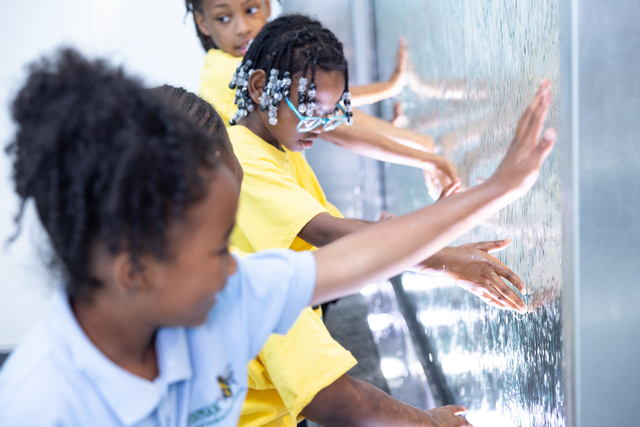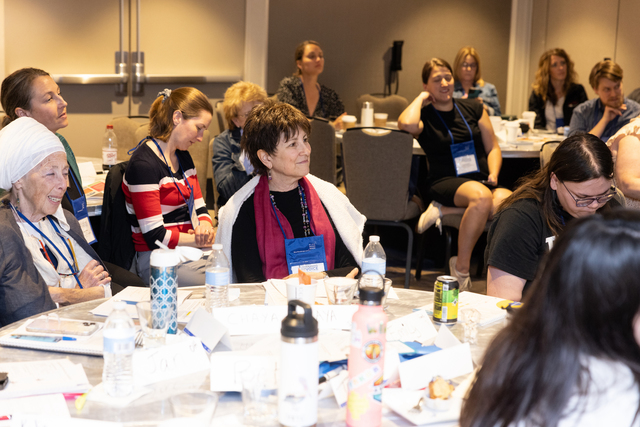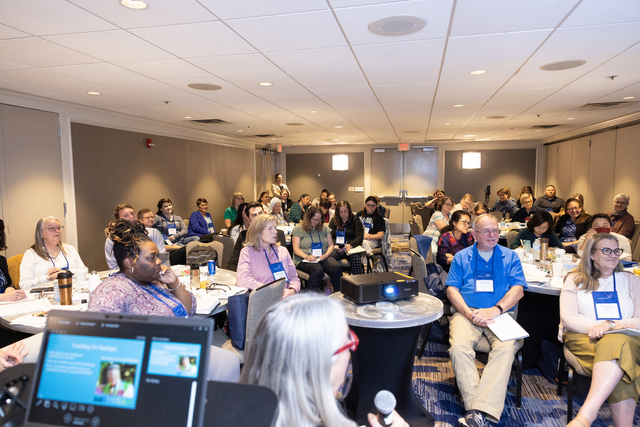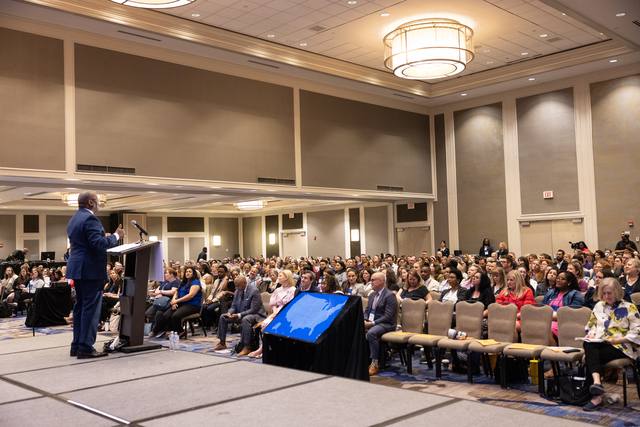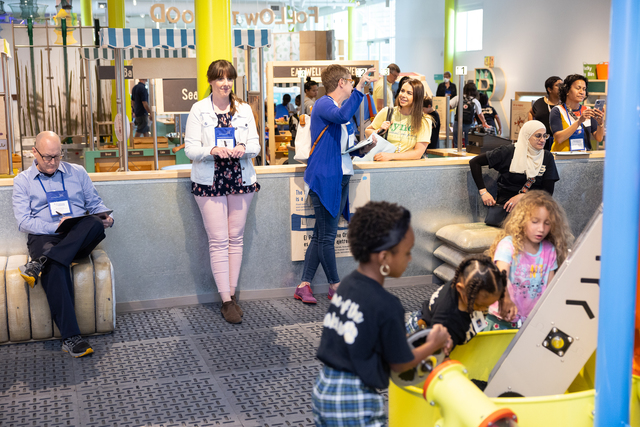
Cultivating Curiosity
The Role of Children's Museums in Driving Global Museum Growth
Von:
Arthur G. Affleck, III (Executive Director of the Association of Children’s Museums), Arlington
Play is an integral and universal aspect of culture that transcends borders, languages, and generations. We continue to see the importance of intentional and meaningful spaces for children and families across the world, particularly through museums and other cultural institutions. Children’s museums exist as unique community institutions where children are valued citizens with the right to developmentally appropriate and high-quality learning experiences.
Children’s museums are the fastest growing sector of the museum community because there is an increased recognition of the power of the hands-on, interactive, and playful learning exhibits and experiences they provide. The Association of Children’s Museums (ACM) is the world’s foremost professional society supporting and advocating on behalf of children’s museums, and those who work at and otherwise sustain them. Based in the United States (U.S.), ACM leverages the collective knowledge of children’s museums through convening, sharing, and dissemination. ACM serves more than 470 members in 50 states and 16 countries.
ACM started in 1962 with an all-volunteer staff, responding to an increased interest in the U.S. in creating “museums” for children that were building on the expertise from the early twentieth century, but incorporating more child-focused, interactive spaces. In 1994, ACM opened its first office with professional staff in response to the second boom of growth of children's museums in the U.S., which focused on interactive spaces supported by research on early childhood development. This model has since been replicated and built upon as interest in children's museums has moved outside the U.S.
While children’s museums have a longer history in the U.S. than elsewhere, ACM is seeing emerging interest globally in creating intentional space for children. That is in large part due to the fact that the underlying goals of interactive, engaging, and enriching experiences for children remain universal.
Play is learning! Children’s museums focus on integrating play to foster healthy social, emotional, and cognitive growth in kids. They're responsive institutions, aiming to cater to community needs through tailored experiences. Children's museums also play a key role as community anchors, going beyond homes and schools. They embody a “third space,” akin to tribal traditions, where people gather, share knowledge, and strengthen bonds. While not new to the museum field, this concept resonates strongly in children's museums. This notion empowers kids to actively engage in the museum experience. Amid and post-pandemic, U.S. children's museums have redefined the “third space,” serving as essential social service providers to families. In essence, these museums intertwine play, learning, and community engagement, continually adapting to changing times.
Some examples include the Children's Museum of the East End (CMEE) and Providence Children’s Museum. After surveying the needs of their community during the pandemic, CMEE opened a food pantry, “Food 2 Play,” to address concerns accessing food, particularly for immigrant families that could not prove residency to register for established community food pantries. The museum served 70-80 families a week, and as of March 2021, over 800 individuals. Steve Long, President of CMEE, responded, “By acting more like a settlement house than a traditional museum, we altered the East End’s perception of CMEE, moving it from a peripheral ‘nice to have’ to the heart of the community.”
Providence Children's Museum—which started Families Together in 1992 in partnership with the Rhode Island Department of Children, Youth, and Families to provide play-based therapeutic programs for families where children have been temporarily taken from their parent's care because of abuse or neglect. More recently, federal appropriations have been provided for PCM to launch a Mental Health Innovation Project.
Both museums are also participants in the U.S. Museums for All program. Museums for All is a national, branded access program through the Institute of Museum and Library Services, and administered by ACM, that encourages individuals of all backgrounds to visit museums regularly and build lifelong museum habits. The cost of museum admission can be a barrier for many low-income families. Participating museums provide reduced admission, inviting low-income visitors to feel welcome at their cultural institutions.
Children are viewed as active participants, rather than passive observers, in children’s museums. When museums prioritize interactive and hands-on exhibits, children explore, experience, and engage with content, thus promoting active learning, critical thinking, and creativity. In turn, children become co-creators and begin to become advocates for issues and trends important to them and their communities. These perspectives can help shape programming, design, and initiatives for museums and, in turn, other institutions in the future.
Looking forward, ACM is working with a major U.S. foundation and a cohort of children’s museums on a pilot program called “Fostering Character Development Through Children’s Museums.” Our goal is to explore how children’s museums can help to foster a wide range of character traits, to include: curiosity, critical thinking, honesty, courage, compassion, service, volunteering, perseverance, and teamwork to help children develop into engaged, responsible, and caring adults, and to share tested successful practices that all children’s museums can access and implement in their organizations. This will lead to new resources, experiences, and skills that help museum professionals enhance their museum’s ability to foster positive character in young children, and help caregivers better understand the importance of their role in the work.
Emerging museums will play an important part in fostering character. Representing those institutions that are not-yet-opened, emerging museums bring new vision and new perspectives, ideas, and talents. In recent years, many emerging museums represent the international growth of children’s museums. ACM saw the international interest and investment in advancing the field at our recent InterActivity 2023: Leveraging Our Voice conference in New Orleans with field leaders in attendance representing Canada, Mexico, South Korea, Israel, Germany, Curaçao, China, Poland, and the United Kingdom.
ACM recognizes that the approaches and expertise U.S children's museums have established and shared may look very different in museum spaces outside the U.S. As an organization focused on supporting the global children's museum field, ACM is continually wanting to learn from and understand how the concepts of children's museums are adapted and translated by communities across the globe. In December 2022, Children’s Museums Singapore opened its doors to their community with aspirations “to be a place of wonder and joyful learning for all children to engage with Singapore and the world.” More recently, the Young V&A opened in London. After seven intensive years of dedicated planning and design, the free national museum showcases the power of creativity in children’s lives as they build new skills and develop the creative confidence needed to thrive in our fast-changing world.
New approaches will only strengthen the children's museum field and increase the relevancy of children's museums to the needs of children and families. As awareness of the value of children’s museums grows globally, there is potential for increased collaboration, innovation, and expansion in diverse cultural contexts. ACM looks forward to learning with and from our members and partnering organizations worldwide.
Credits und Zusatzinfos:
Credits
All photos: Association of Children’s Museums, InterActivity 2023, photo by JCi Creatives
Permanent Link: www.doi.org/10.58865/13.14/234/2
Zitat:
Arthur G. Affleck, III: Cultivating Curiosity. The Role of Children's Museums in Driving Global Museum Growth, in: neues museum 23/4, www.doi.org/10.58865/13.14/234/2.
Credits
All photos: Association of Children’s Museums, InterActivity 2023, photo by JCi Creatives
Permanent Link: www.doi.org/10.58865/13.14/234/2
Zitat:
Arthur G. Affleck, III: Cultivating Curiosity. The Role of Children's Museums in Driving Global Museum Growth, in: neues museum 23/4, www.doi.org/10.58865/13.14/234/2.
